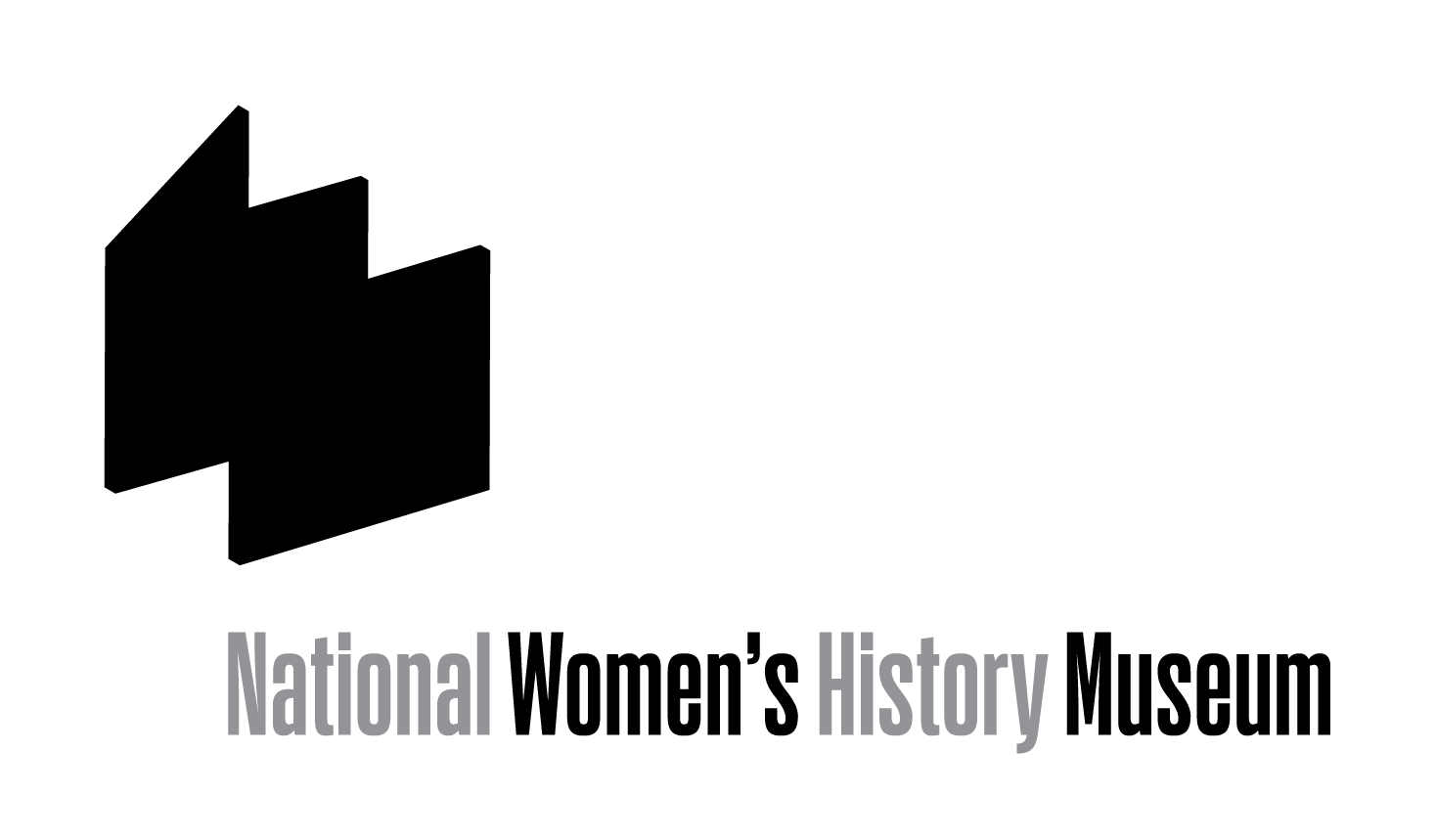
Horse drawn float declares National American Woman Suffrage Association's support for Bristow-Mondell amendment
Photograph of three women standing in street in front of horse-drawn wagon with sign, "National American Woman Suffrage Association founded in 1869 supports Bristow-Mondell Resolution drafted by Susan B. Anthony, 1874, First, Last and Always."
Library of Congress

Elizabeth Cady Stanton, "Solitude of the Self"
Public domain.
Elizabeth Cady Stanton was a true leader of the woman suffrage movement, serving as the president of the National Woman Suffrage Association for twenty years and the as first president of the National American Woman Suffrage Association. At the age of 77, in 1892, Stanton stepped down as president. “Solitude of the Self” was her resignation speech, and in it Stanton argues for women’s equality. Stanton saw women as citizens of the country and argued that they should therefore be treated like all other citizens. This meant women should have access to all things men did, such as the right to vote, higher education, and “freedom of thought and action.” Through her words it is clear that Stanton sees all individuals as walking alone in life and they therefore need all of their rights to prosper.
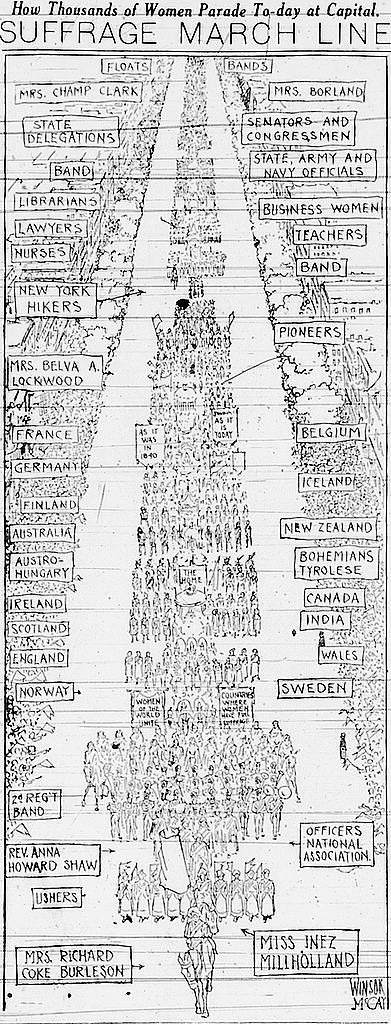
Suffrage march line--How thousands of women parade today at Capitol
Women marchers organized by country, state, occupation, and organization, led by Miss Inez Milholland and Mrs. Richard Coke Burleson, during the suffrage march, March 3, 1913, Washington, D.C.
1913
Library of Congress

Carrie Chapman Catt
Library of Congress
n.d.
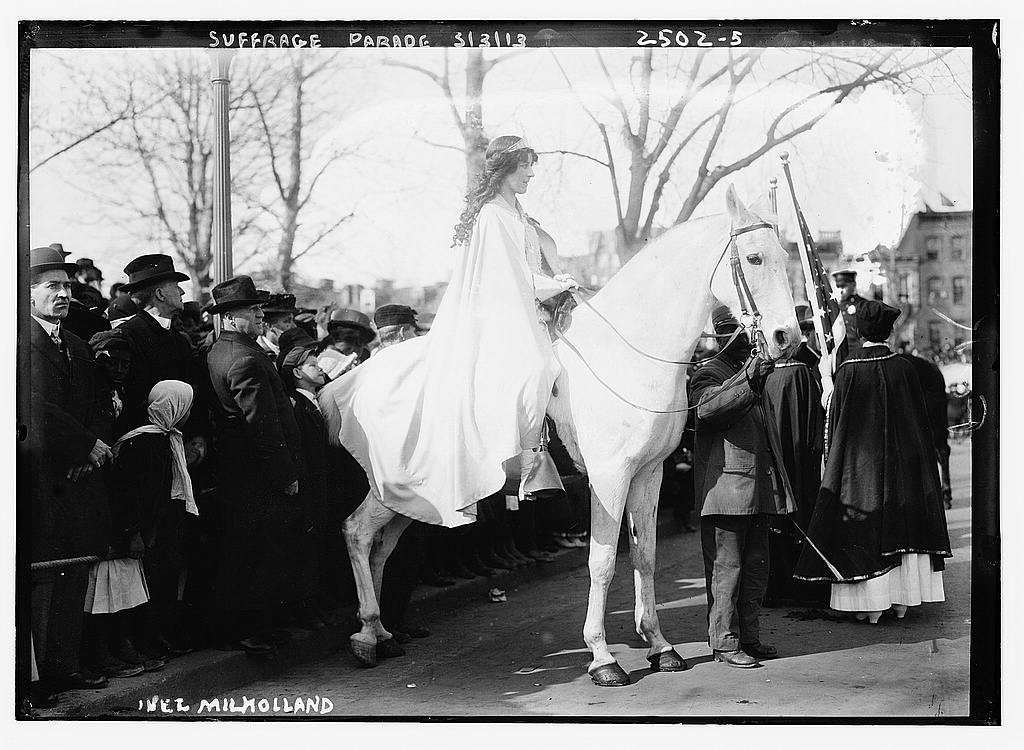
Suffrage parade, Inez Milholland
Photo shows lawyer Inez Milholland Boissevain riding astride in the suffrage parade as the first of four mounted heralds. In her short life she shared with many of her fellow marchers a commitment to social reform. She joined organizations striving to improve the working conditions of children and the lives of African Americans. She was also a strong supporter of the shirtwaist and laundry workers. Three years after the parade, she collapsed and died at age thirty during a western suffrage lecture tour.
1913
Library of Congress
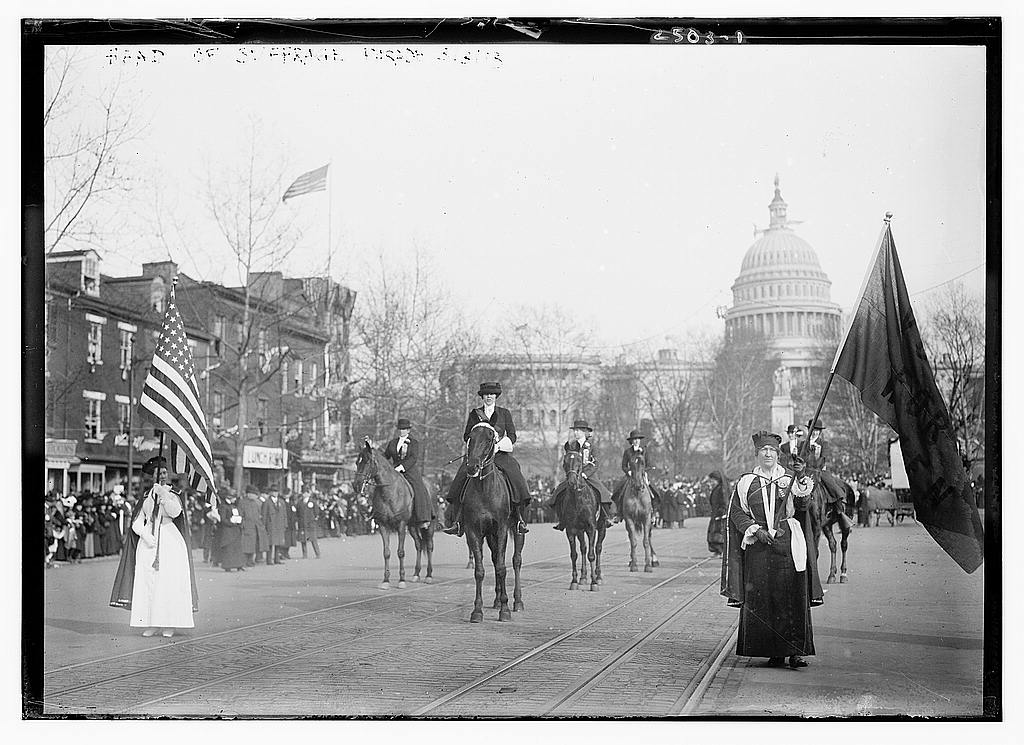
Head of suffrage parade
Photo shows Grand Marshal Mrs. Richard Coke Burleson (center, on horseback) leading suffrage march on March 3, 1913.
1913
Library of Congress

Official program - Woman suffrage procession, Washington, D.C. March 3, 1913 / Dale.
Cover of program for the National American Women's Suffrage Association procession, showing woman, in elaborate attire, with cape, blowing long horn, from which is draped a "votes for women" banner, on decorated horse, with U.S. Capitol in background.
1913
Library of Congress
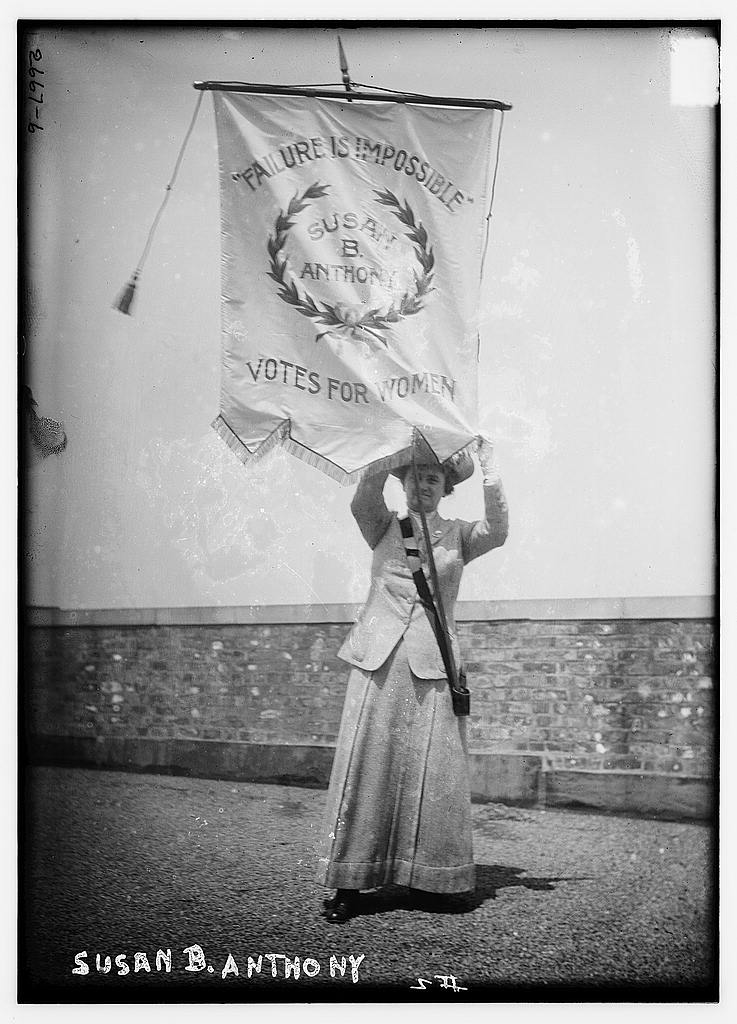
Susan B. Anthony
Photo shows suffragist Florence Jaffray "Daisy" Harriman (1870-1967) holding a banner with the words "Failure Is Impossible. Susan B. Anthony. Votes for Women."
c.1910-1915
Library of Congress
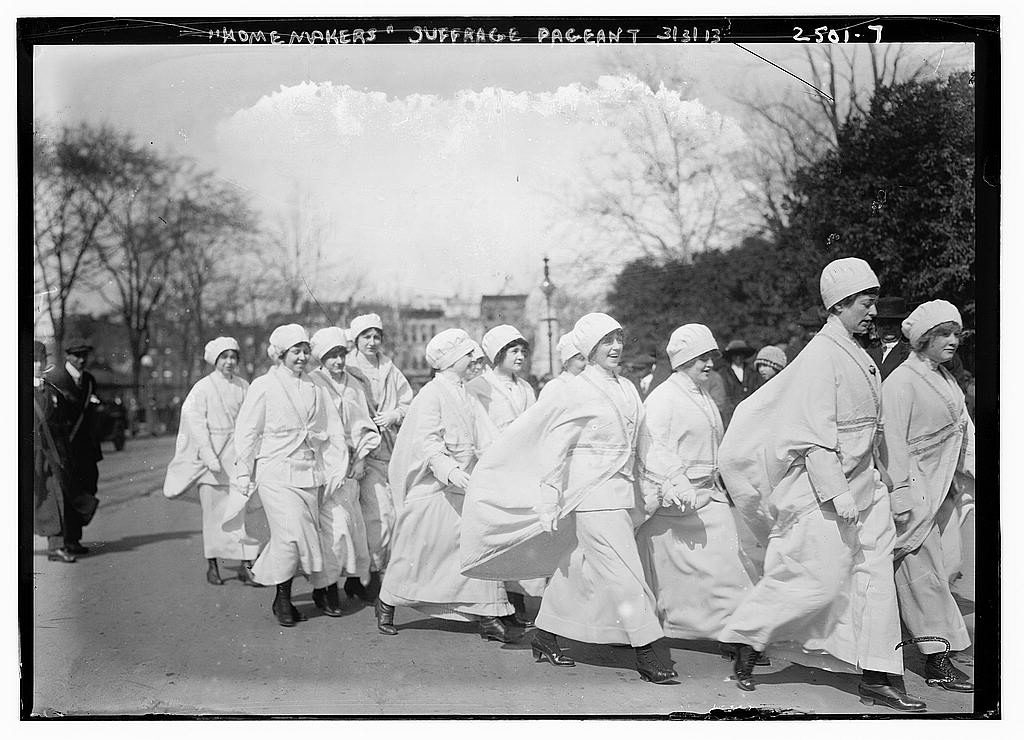
"Home Makers," Suffrage Parade
Photo taken at the Woman Suffrage Parade held in Washington, D.C.
March 3, 1913
Library of Congress
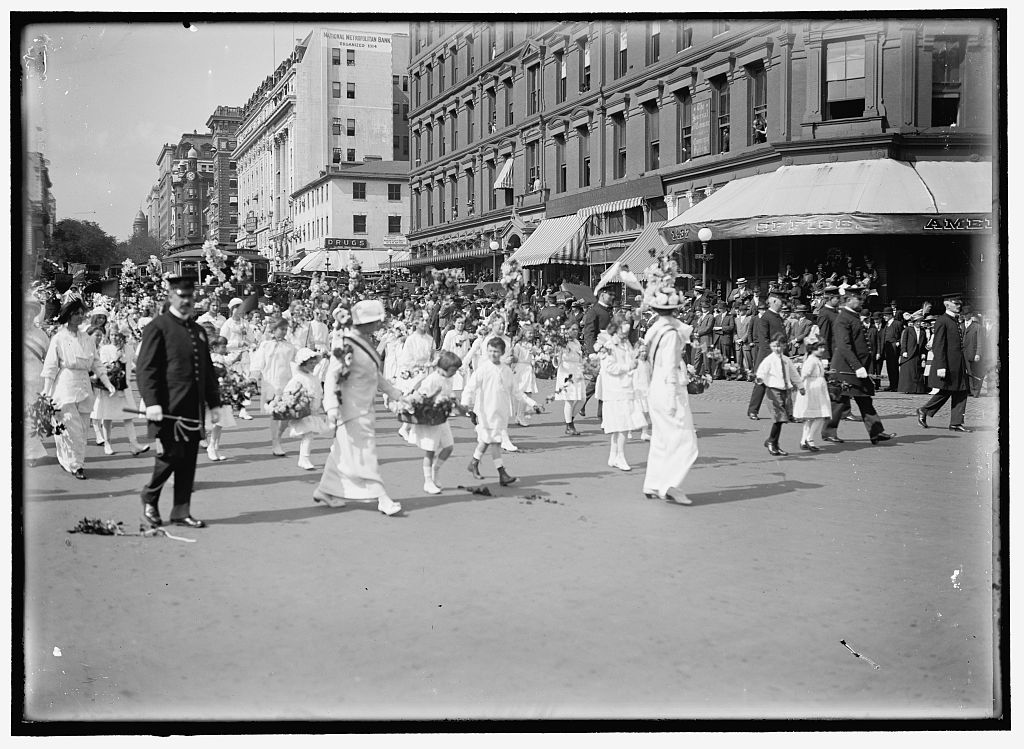
Woman Suffrage Parade
1914
Library of Congress
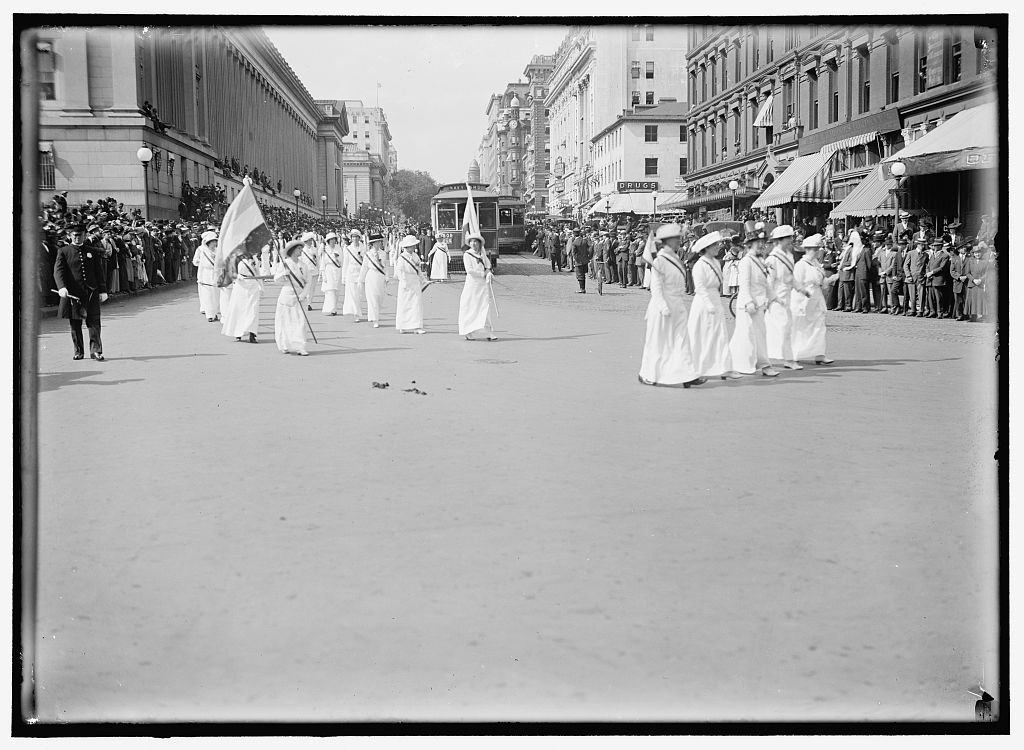
Woman Suffrage Parade
May 1914
Library of Congress

Woman Suffrage Parade
May 1914
Library of Congress

Suffrage Parade
Photo two women dressed as Indians on horseback at the Woman Suffrage Parade held in Washington, D.C., March 3, 1913.
Library of Congress

Crowd on Penn Ave. watching Suffrage parade
Photo taken at the National American Woman Suffrage Association parade held in Washington, D.C., March 3, 1913, the day before President Wilson's inauguration.
March 3, 1913
Library of Congress
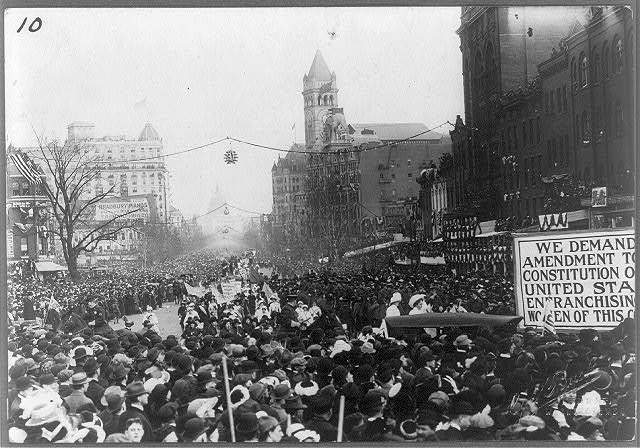
Woman suffrage parade, Wash., D.C.
Photograph shows parade and enormous crowd on Pennsylvania Ave. looking toward Capitol past old Post Office.
1913
Library of Congress

Suffrage Parade
March 3, 1913
Library of Congress
















